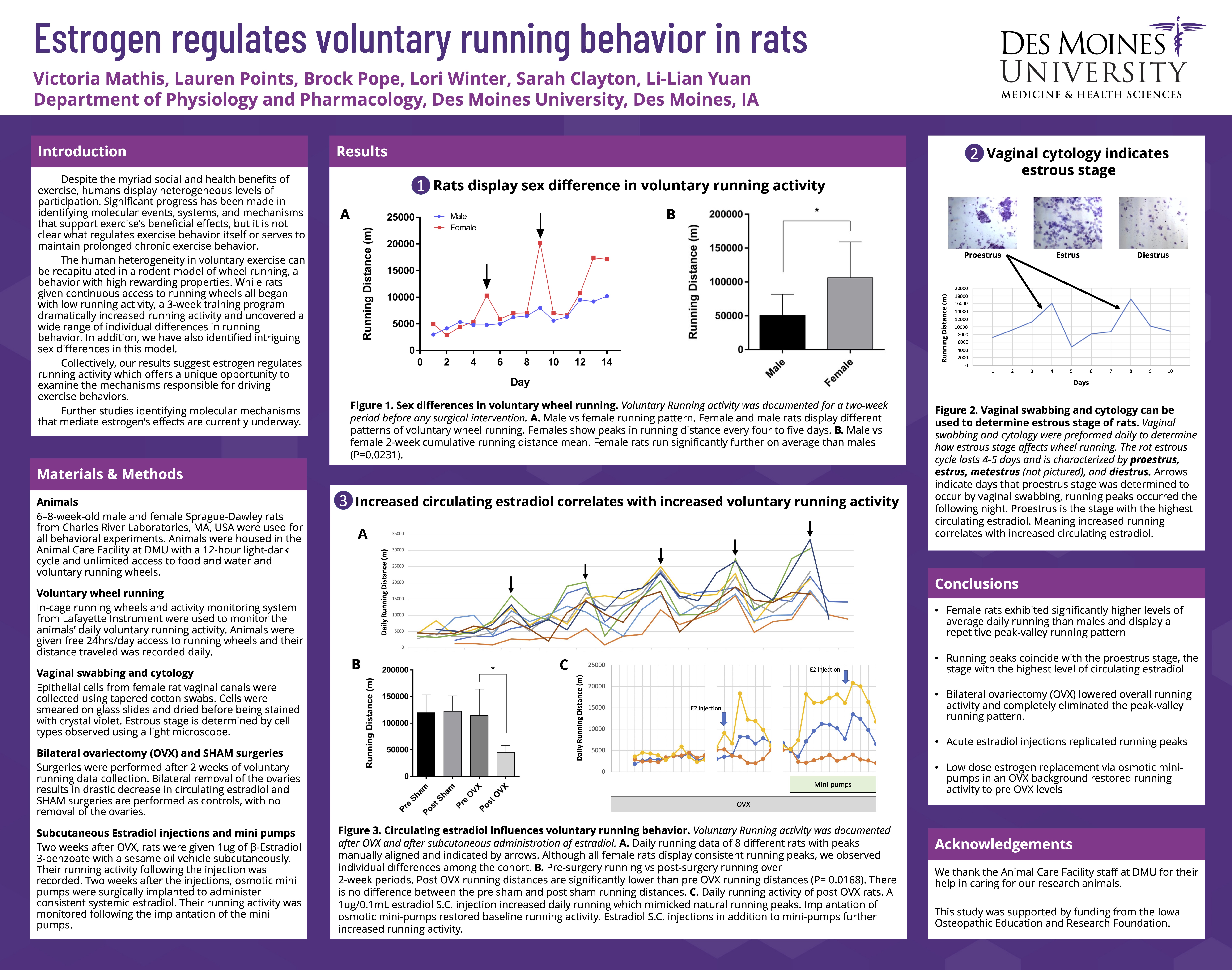
POSTER ABSTRACTS
Materials should NOT be shared with those that are not registered for the conference. Poster abstracts are not proofed for spelling and/or grammar errors.
The poster and/or other information contained on this website may NOT be downloaded and/or used without prior written permission from all authors on the project. If you would like to be connected with the author(s), please email [email protected].
Estrogen regulates voluntary running behavior in rats
Victoria Mathis, MSBS'22, Lauren Points, PhD, Brock Pope, Lori Winter, Sarah Clayton, PhD, and Li-Lian Yuan, PhD
Department of Physiology and Pharmacology, Des Moines University, Des Moines, IA
Abstract
Despite the myriad social and health benefits of exercise, humans display heterogeneous levels of participation. Significant progress has been made in identifying molecular events, systems, and mechanisms that support exercise’s beneficial effects, but it is not clear yet what regulates exercise behavior itself or serves to maintain prolonged chronic exercise behavior.
The human heterogeneity in voluntary exercise can be recapitulated in a rodent model of wheel running, a behavior with high rewarding properties. While rats given continuous access to running wheels all began with low running activity, a 3-week training program dramatically increased running activity and uncovered a wide range of individual differences in running behavior. In addition, we have also identified intriguing sex differences in this model. Compared to age-matched males, female rats exhibited significantly higher levels of average daily running. When assessing individual female rats’ running behavior, we also observed a repetitive peak-valley pattern of running activity, with peaks coinciding with the proestrus stage (highest estrogen level) in the rat estrous cycle. Bilateral ovariectomy (OVX) not only lowered their overall running activity, but also completely eliminated cyclical variations. Furthermore, low dose estrogen replacement via osmotic mini-pumps in an OVX background restored running activity to pre-OVX levels, and acute estradiol injections were able to replicate running peaks. Collectively, our results suggest estrogen regulates running activity which offers a unique opportunity to examine the mechanisms responsible for driving exercise behaviors.
Further studies identifying molecular mechanisms that mediate estrogen’s effects are currently underway.
Funding: Iowa Osteopathic Education and Research Foundation
IACUC ID: 2018-01
Key words: Estrogen, exercise, motivatio
Access PDF version to expand view.

